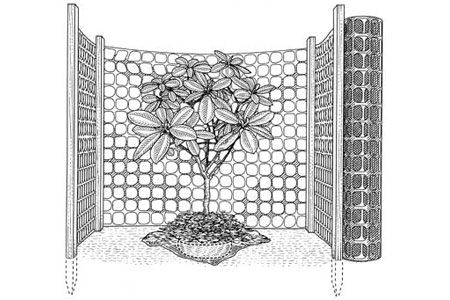Renovating your home or landscaping is exciting, but it can put your cherished plants at risk. To protect them, you can temporarily relocate your plants and replant them once the work is done. In this guide, we’ll explore the essential steps and best practices for temporary transplanting.
Essential Tools for Temporary Transplanting
Make sure you have the right tools and materials for a successful temporary transplant.
Digging Equipment
Proper digging tools help safely remove plants from the ground.
- Garden fork
- Garden spade
- Pruning shears
- Transplanting shovel
Plant Protection Materials
The following items will safeguard your plants during the move and in their temporary location:
- Burlap
- Plastic fencing
- Twine
- Wood chips or mulch
Watering Supplies
Don’t forget to keep your plants hydrated during the transplanting process.
- Moisture meter (optional)
- Spray nozzle attachment
- Watering can or hose
Step-by-Step Guide to Temporary Transplanting
Follow these steps from This Old House landscape contractor Roger Cook to safely relocate your plants and ensure their survival during your renovation project.
Preparing the Plant for Relocation
Take the following steps before uprooting your plant:
- Water the plant thoroughly a day before transplanting.
- Prune any dead or damaged branches to reduce stress on the plant.
- Tie the branches together with twine to protect them during the move.
Uprooting the Plant Safely
Carefully extract your plant to preserve its root system. Here’s how:
- Measure the plant’s height.
- Cut through the roots with a transplanting shovel and create a root ball that’s 1-foot wide for every 18 inches of plant height.
- Carefully pry the plant from the ground and wrap burlap around the roots.
- Remove the plant from the area, then go back and fill in the hole to avoid injuries.
Choosing a Temporary Storage Location
Select a spot that offers protection from harsh elements and construction activities. Use the following techniques:
- Find a shaded area away from the construction zone.
- Make sure the location has well-draining soil.
- Dig a shallow hole to accommodate the root ball.
- Place the plant in the hole and cover the root ball with a 2-inch layer of wood chips or mulch.
Caring for Plants in Temporary Quarters
Here’s how to care for your plants in their temporary home:
- Remove the twine from the branches and allow them to resume their natural form.
- Water the plant regularly—about half an inch of water twice per week.
- Monitor the plant for signs of stress or disease.
Best Practices for Long-Term Temporary Plant Storage
If your renovation lasts more than a few weeks, follow these tips to keep your plants healthy in their temporary home.
Watering Schedule
Consistent watering is crucial for plant survival. Follow these best practices:
- Adjust watering based on rainfall and temperature.
- Use a moisture meter to check soil moisture levels.
- Water deeply but less frequently to encourage deep root growth.
Protecting from Environmental Stressors
Shield your plants from extreme weather conditions with the following techniques:
- Apply a thick layer of mulch to insulate roots from temperature fluctuations.
- Create windbreaks if necessary to prevent damage from strong winds.
- Use shade cloth to protect from intense sunlight.
Monitoring Plant Health
Regular checkups can help you catch and address issues early. Here’s how:
- Inspect leaves for signs of pests or disease.
- Check soil moisture levels regularly.
- Prune any dead or damaged growth as soon as you notice it.
Plants That Thrive with Temporary Transplanting
Some plants are better suited than others for temporary transplanting. Here’s Cook’s list of plants to preserve and those that aren’t worth the effort:
| Transplants Well | Doesn’t Transplant Well |
|---|---|
| Azalea Boxwood Rhododendron Spirea | Dwarf Alberta spruce Lilac Rose Yew |
How To Prevent Transplant Shock
Plants can get transplant shock when they’re moved, potentially leading to stunted growth or even death. Take these steps to minimize risk.
Proper Root Care
Protect the root system to help prevent transplant shock:
- Keep as much of the root ball intact as possible during uprooting.
- Avoid exposing roots to air for extended periods.
- Water the plant immediately after replanting to help roots establish.
Timing Your Transplant
The timing of your transplant can significantly impact its success:
- Avoid transplanting during extreme weather conditions.
- Choose overcast days or early mornings to reduce stress on the plant.
- Transplant during the plant’s dormant season when possible.
Preparing the New Planting Site
When your renovation is complete, it’s time to move your plants back home. Prepare in advance to help your plants readjust.
Soil Preparation
Prepare the soil properly for successful replanting. Remove any debris from the construction site and test the soil pH. Amend with organic matter such as compost.
Choosing the Right Location
If you’ve made major landscape changes, or you want to move the plants to a better location, consider these tips:
- Consider the plant’s sunlight requirements.
- Make sure plants have proper damage and won’t get flooded in heavy rain.
- Allow for proper spacing between plants for growth.
- Avoid areas with poor drainage or heavy foot traffic.

